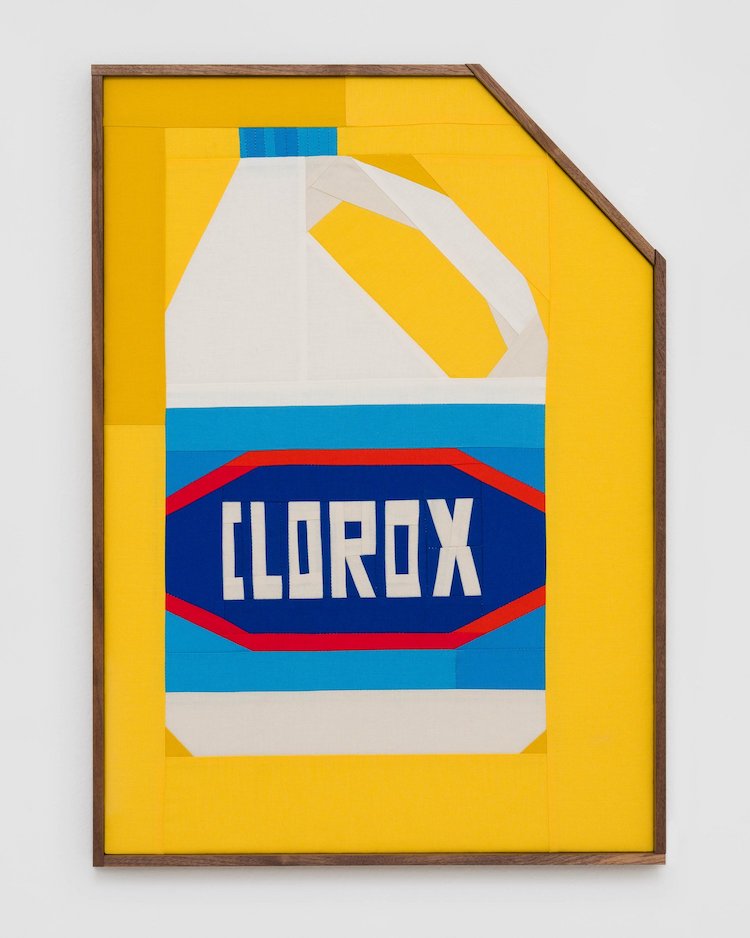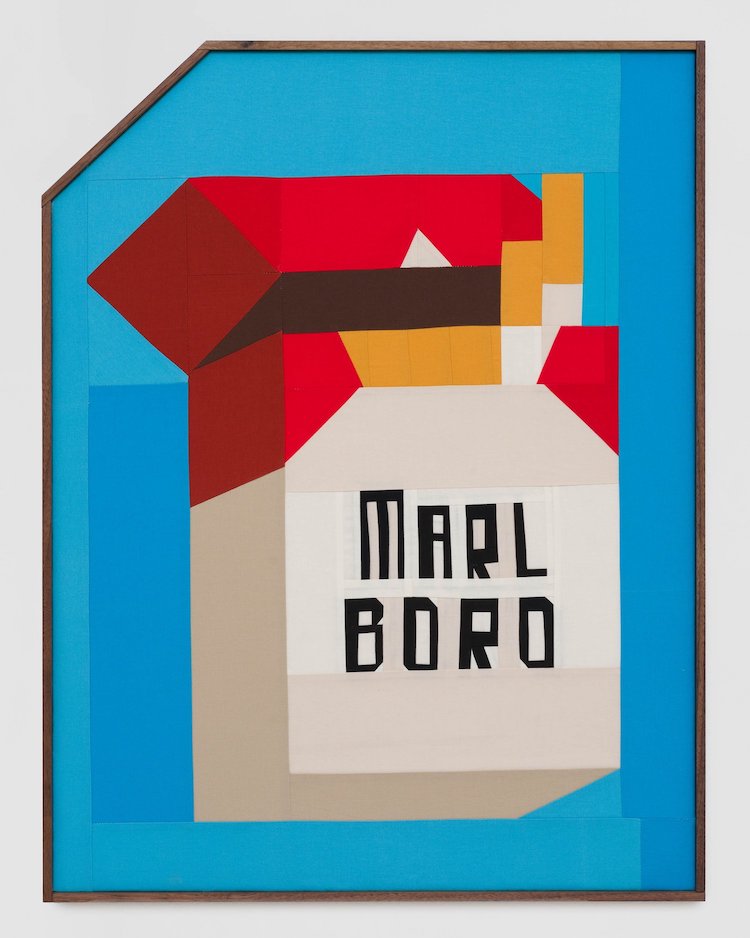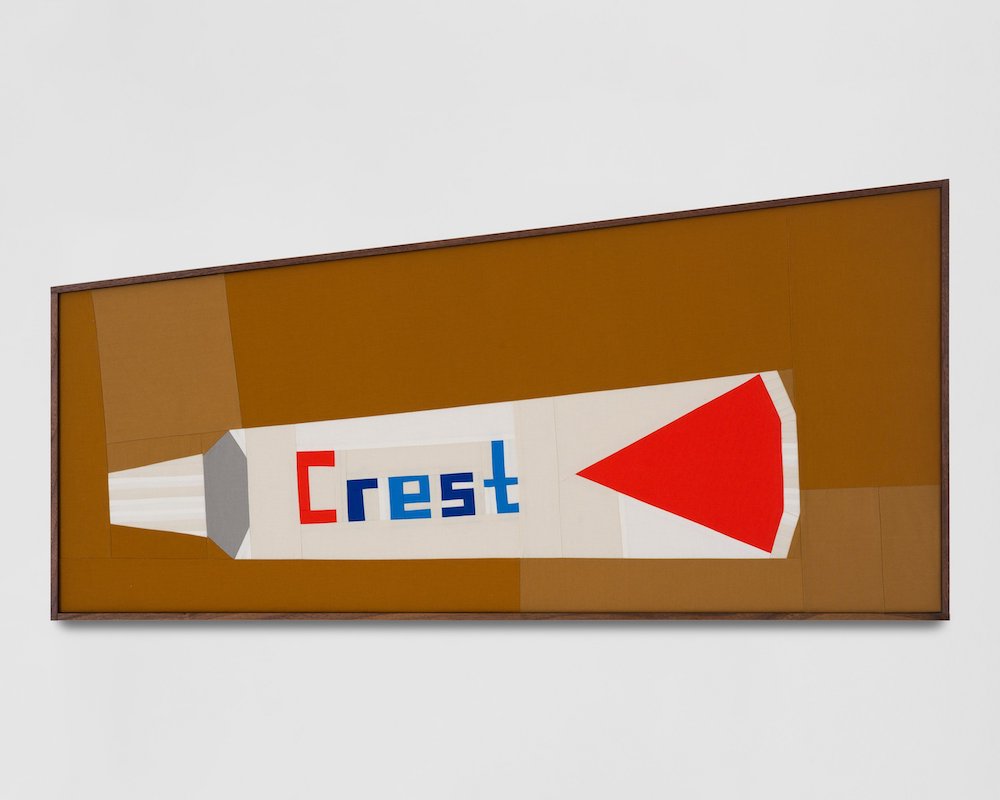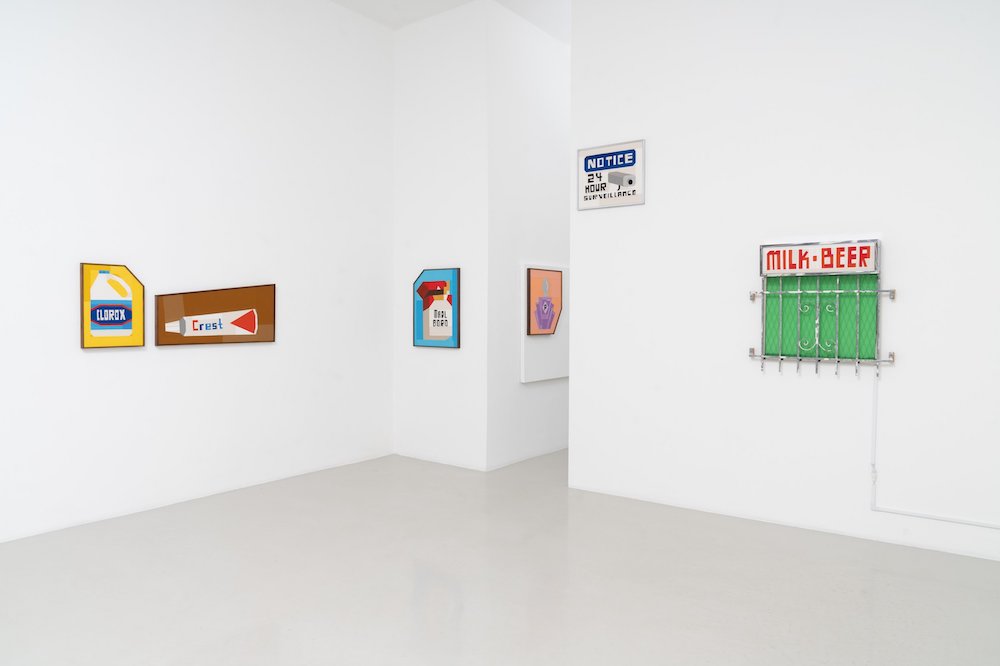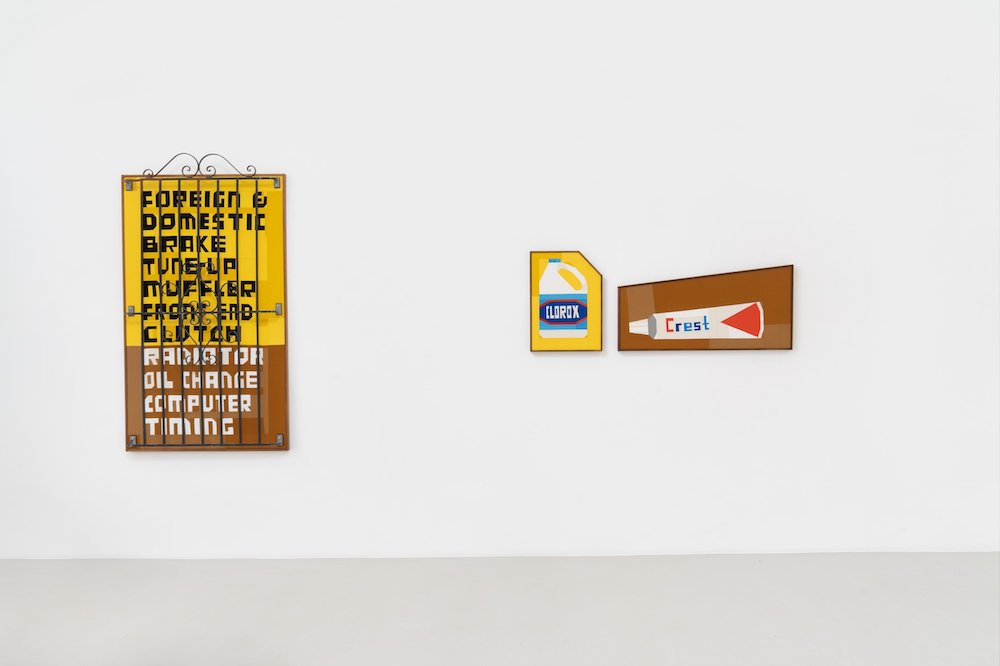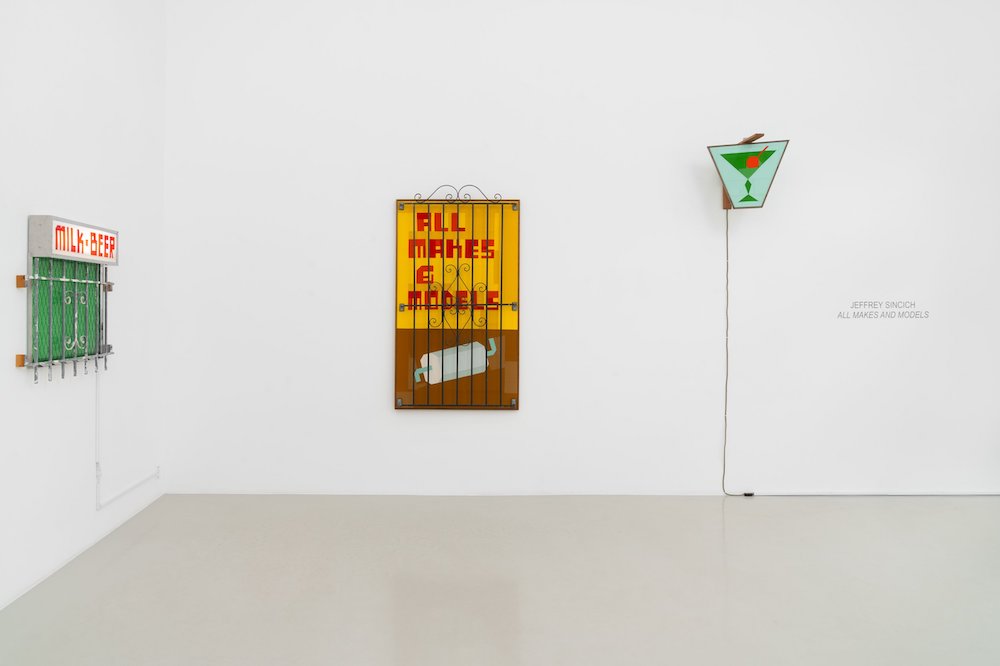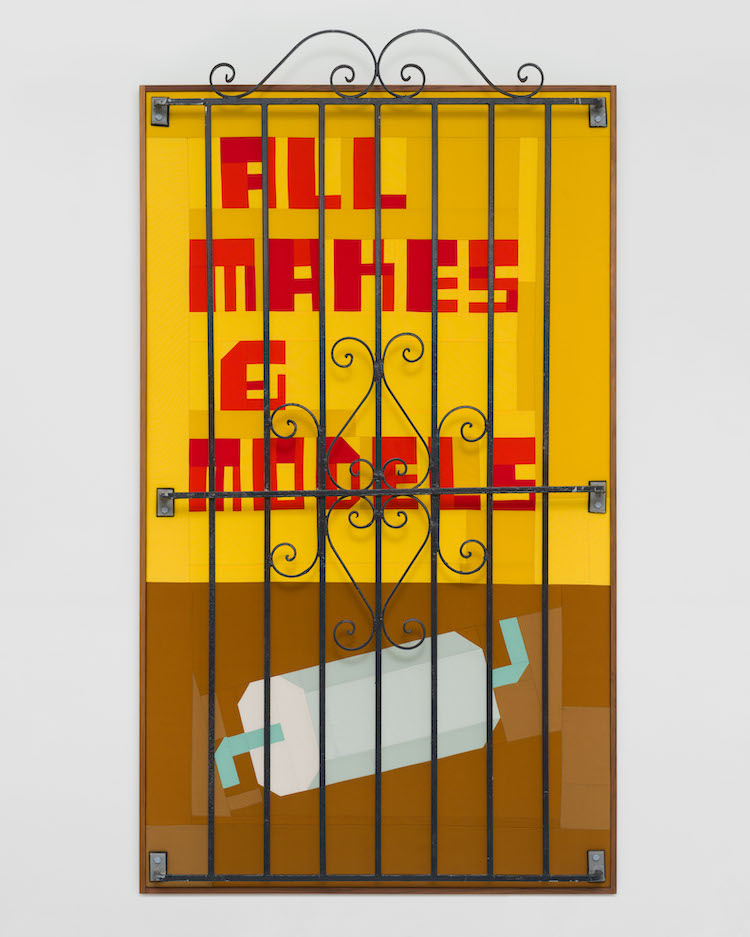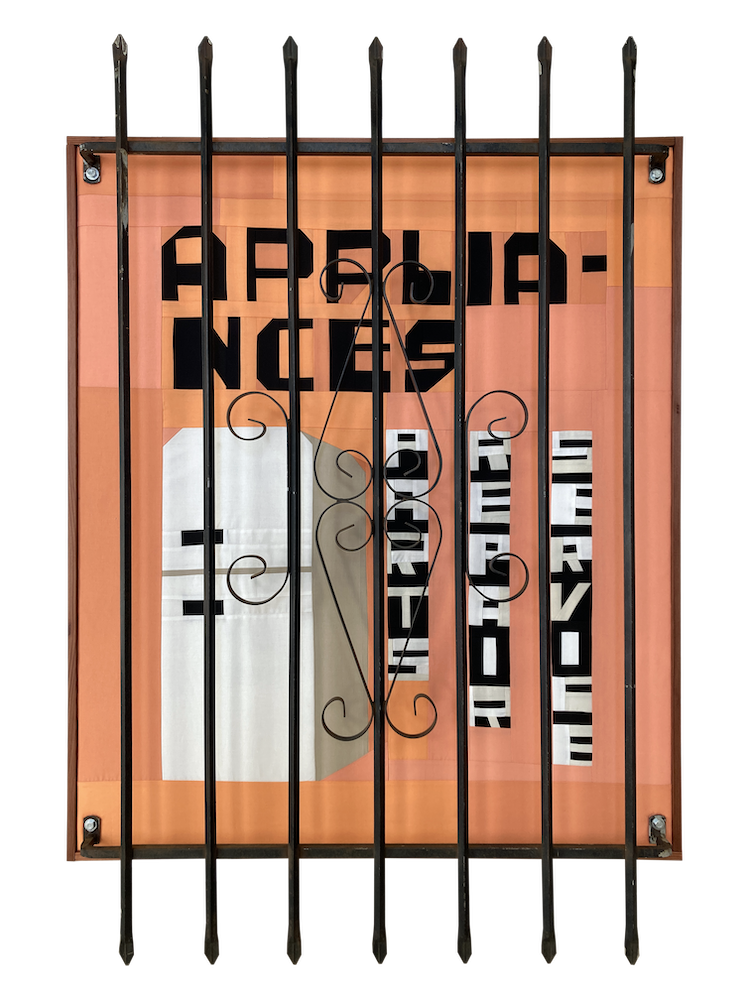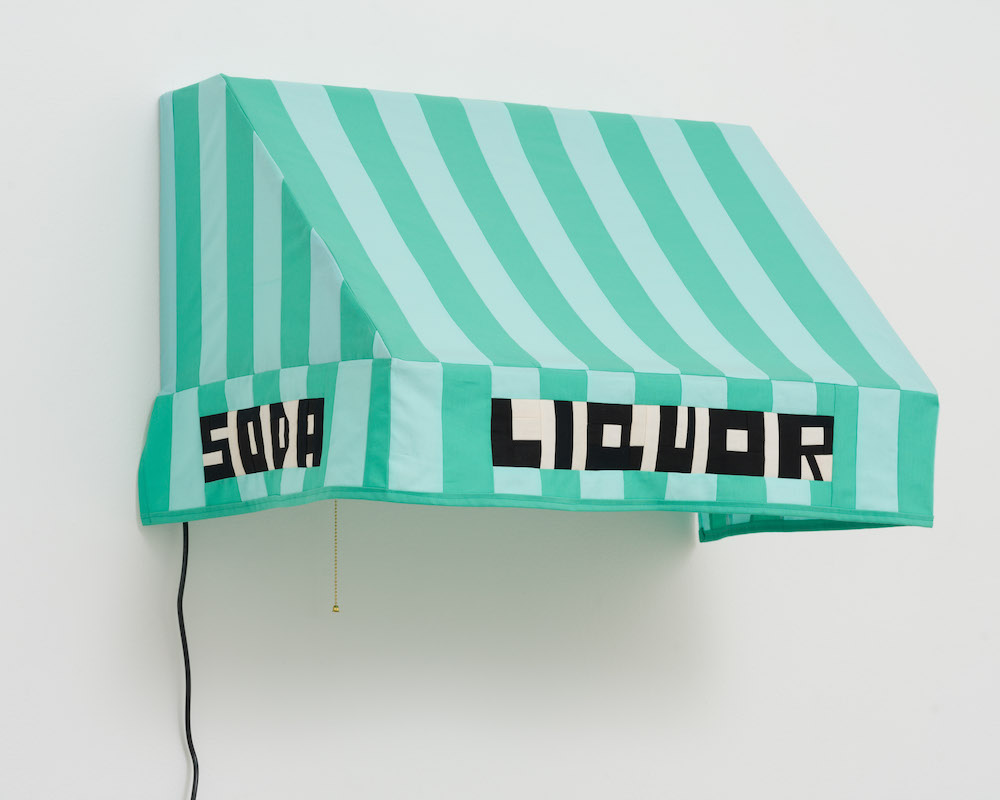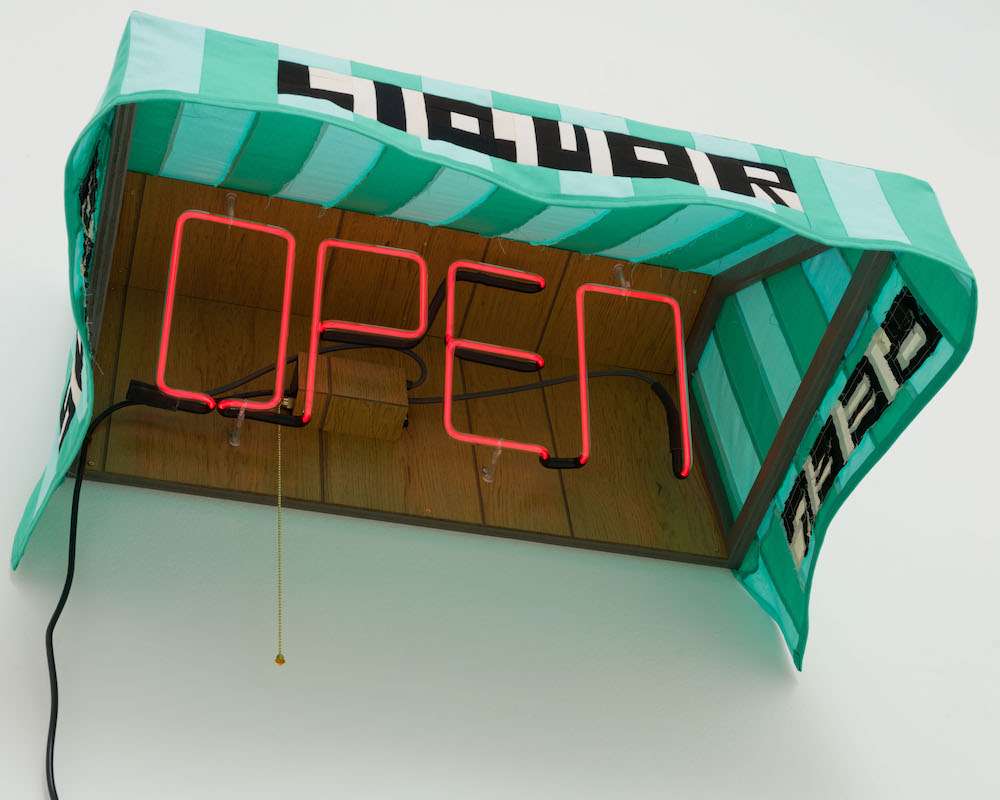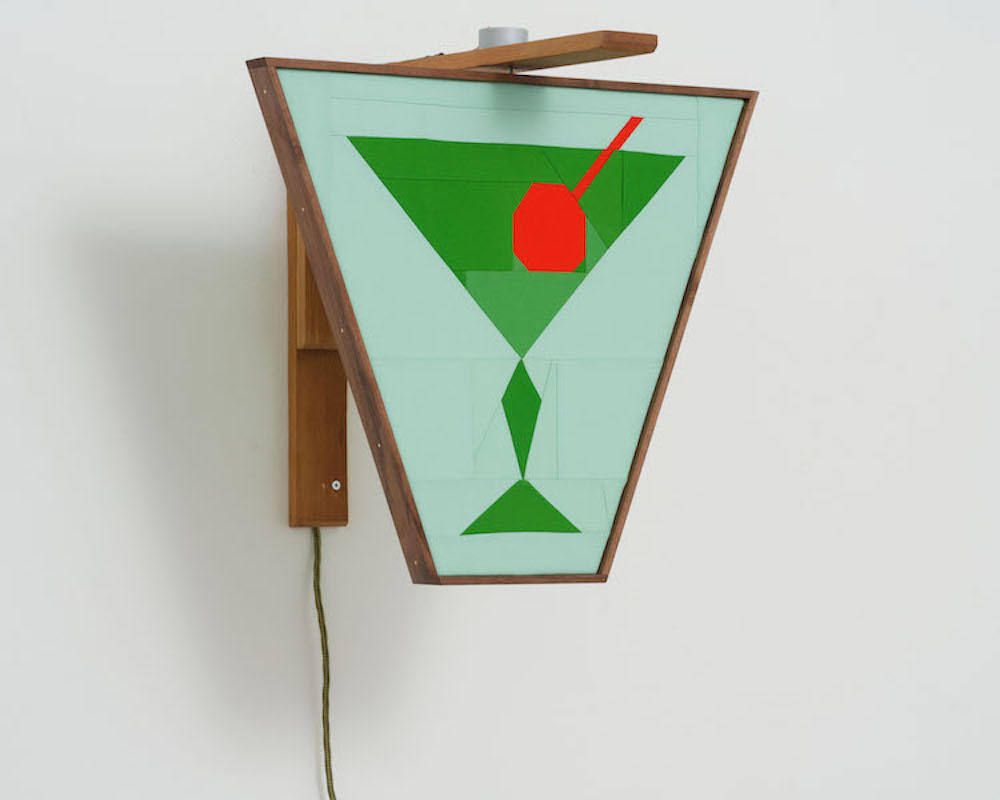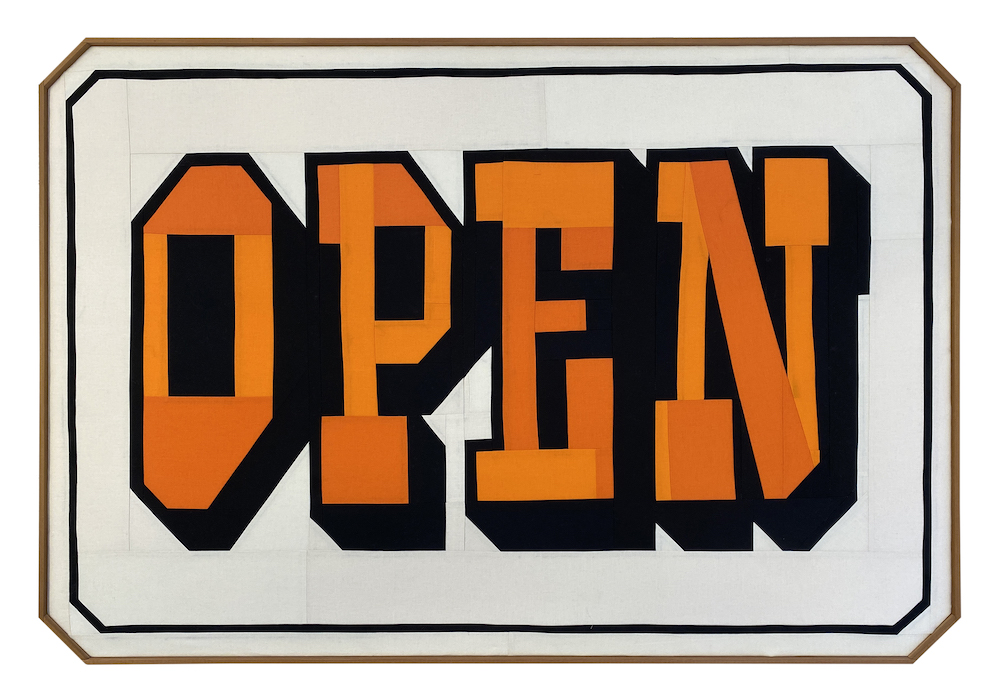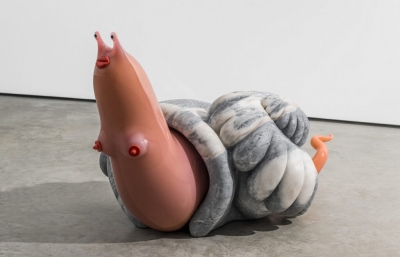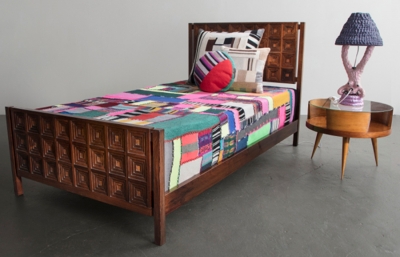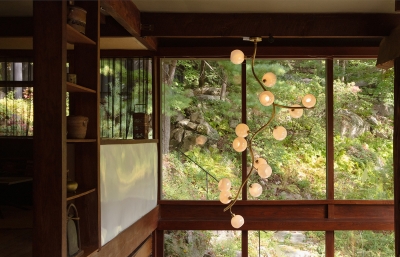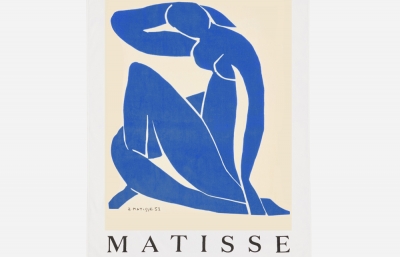Starting out as a ceramicist, Jeffrey Sincich moved on to sign painting and is now embarking on his quilting era. Each in-depth phase has led to the next, culminating in a unique combination of textiles, signage, sculpture, and architecture. We caught up with him this summer just before he headed to Tokyo for his second show at Pacifica Collectives.
Kristin Farr: You grew up and went to art school in Florida, which is a foreign place to many people. How did living there influence your work?
Jeffrey Sincich: I definitely wanted to leave after college, but after being away for ten years, I appreciate it and I’m nostalgic about the good things.
When I tell people I’m from Florida, a lot of them say, “I’m so sorry,” or “Everyone is so fucked up there!” But when I ask if they’ve ever been there, they usually say no. If you’ve ever been an hour outside any major city, it’s pretty much the same.
The area I grew up in was down to earth and I liked growing up there. We went to garage sales every weekend. There are so many more old people in Florida, so the garage sales are amazing, and that influenced my aesthetic and taste—my love for anything that’s old.
What’s the last reference photo you took?
It was a gas station on 19th Avenue in San Francisco with signs on signs on signs. It’s a banner that says “Pass or free test for smog,” and a window vinyl that says “While-U-Wait,” which was the title of my last show at Park Life, and then it says “Smog diesel too.” There are so many handwritten signs on top of each other.
Is it the handmade signs that catch your eye?
It’s also stuff that’s hand-assembled or installed. You know when there’s a strip mall where all the signs are the same size and lit up, and made out of the same material, all symmetrical? That’s really boring, but I’m attracted to when there’s a sign among them that someone put up crooked or isn’t symmetrical, or the layout is weird, just anything that’s skewed a little bit, adding texture in ways the person might not be thinking about. I went to school for ceramics, but I did sign painting for seven years and am always thinking about layout and spacing.
I like handmade things, but it doesn’t have to be hand-painted. It can be a vinyl sign that’s done weird, or when someone writes on a piece of paper and it doesn’t fit, so the letters get scrunched at the end. And the ways people think they should draw can be so weird! They’ll use a curve I would never think of that just isn’t normal, and I think that’s cool. Doing signs, making patterns, and trying to make them perfect all the time is a little stressful, so moving away from it has been nice.
How did you start mixing your sign painting skills with quilting?
It started five years ago as a hobby. My dad taught me how to sew in high school. I was making bike bags. I’ve always been attracted to quilts, so I wanted to make one. In my ceramics years, I made figurative sculptures, and looking back at some of it recently, I realized I was making quilt patterns on their clothing. I started by making quilts of storefront images based on the tile patterns. The first one was from a photo I had taken in North Beach in San Francisco. 
I saw that one. It’s kind of abstract. When did you become interested in tile patterns?
When I was living in Portland, I often made trips to San Francisco because I wanted to move here, and I was always taking photos of the tilework, and that was the main inspiration to start quilting.
The first sign quilt said “For Rent,” and I was able to use the stuff I like from sign painting, like the colors, but do it in a more freeform, intuitive way. It felt like playing, versus using a pattern and making everything tight, or painting and waiting for it to dry. Sewing is very immediate.
And you can wear whatever clothes you want.
Exactly! I like wearing my clothes to the studio again and not just my one pair of painting pants.
I wondered if you laid out the quilts digitally because it can be technical, making all the pieces fit together smoothly.
I started with the first one by using patterns and scaling things on Photoshop, but by the second one, that felt boring because I knew how it would turn out, and I was still using a pattern. So I started to make them more intuitively, which I think makes them more interesting. I’ll freehand the letters and numbers. If it’s something like a Tide bottle, I’ll draw it out and get a rough measurement, like the cap needs to be three inches tall, but I am just cutting with the rotary wheel and developing a process.
The key to sewing is ironing.
I do iron a lot. My work setup is my sewing machine facing the window, my ironing table to the right, and behind me is the cutting table. It’s a U-shape, so I have a workflow where I’m constantly going in a circle. 
Tell me about the architectural elements in your recent show at Charlie James Gallery.
I’ve been using window grates to make the quilt pieces more sculptural. I love going to salvage places and window grates are one of my biggest inspirations. There’s one on the way to my studio where I go several times a week. I’ve gotten some window grates there, or even off the street. They’re just so beautiful and the texture adds that second dimension and shadows onto the quilt—you’re looking through it. Window grates are meant to be beautiful but they’re also meant to protect, so it’s this dichotomy of, “Look at us,” but also, “Keep out!” They serve two purposes.
Our sign shop used to be next to a guy who did neon, and I always wanted to make one, so I worked with Rebel Neon and made the design and patterns. I even thought of making window grates out of neon, a different type of beauty that is signage related. It draws attention, and all these different elements are like my favorite storefronts that have multiple signs, with hand-painted windows, maybe gold leaf on the door, a neon sign, and a hanging sign—all of that together is really interesting.
That show was about markets and corner stores, and signs you’d see on an everyday walk. I made an awning with the neon underneath, and I tried to hang them closer to the heights they’d normally be. There’s a surveillance sign hung up high, like where it would be on a building. The awning was scaled down but you had to walk up to it and look underneath to see the neon “Open” sign. The quilts were illustrations of Crest toothpaste, Clorox bleach, perfume, and things you’d get at a corner store. The signs painted on the sides of buildings advertising what they sell were the inspiration.
Do you smoke cigarettes?
No. No, I hate cigarettes. They’re something I’m just coming to terms with. They are a part of our life no matter what. They’re everywhere, and I just have to accept it. They are a beautifully packaged little thing, you know? I love packaging. Big time.
Can you mention any of your celebrity collectors?
The only person I know of is Lake Bell. She asked me about doing a commission related to her name, and I happened to have a drawing of a payphone in my sketchbook, so I thought of Pacific Bell. I was happy because it was something I would’ve made anyway. 
I also saw Jeff Tweedy holding one of your quilts. And have you sent one to Kurt Vile since you’re a fan?
I forgot about the Jeff Tweedy one! I don’t count it, but he has a recording studio called The Loft, and they started following me on Instagram, so I asked them if I could send one to Jeff Tweedy. They sent me a photo of him holding it and I felt like, oh my God! I made it.
I haven’t done anything for Kurt Vile but we did message about me doing a poster… hopefully one day. I do love him so much.
Are there any artists you count as influences?
Do you know Lauren D’Amato?
@SpookyOrbison. She’s a subtle genius.
She’s definitely a genius. She started sign painting after art school, so it’s the same trajectory as mine. Anyone who does lettering, and obviously the Mission School people, were a huge influence. When I went to art school, I knew nothing about art. I remember we had to fill out a form about ourselves, and I said my favorite artist was Salvador Dalí because he was the only artist I knew. There was a Dalí Museum in St. Petersburg, Florida, and that’s all I knew about art and art history. Then we watched an Art:21 film about Margaret Kilgallen and Barry McGee, and I was like… What the fuck? It just blew my mind.
Sincich’s solo show at Charlie James Gallery in Los Angeles took place this past spring. This article was originally published in the FALL 2023 Quarterly.

